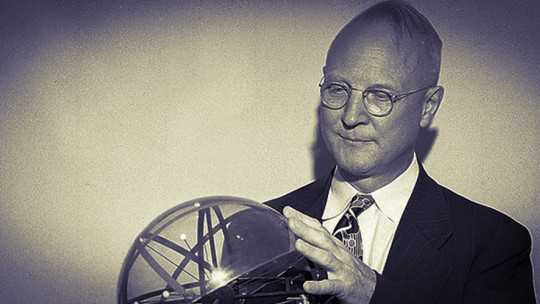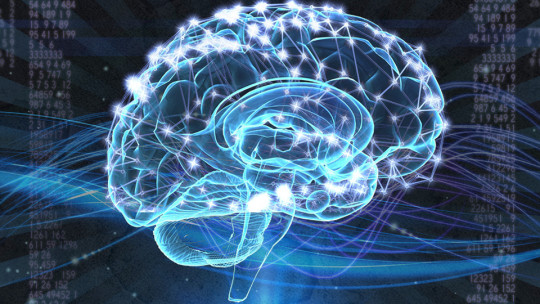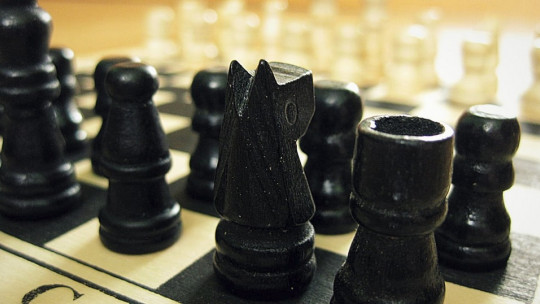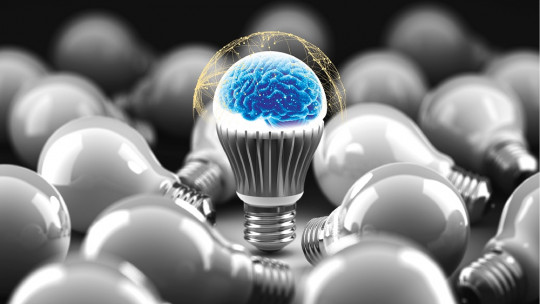
Intelligence is a complex construct which throughout history has been conceptualized in very different ways by various authors.
From a classic view that treats intelligence as a single and unitary capacity to others that consider that it was a set of capacities independent of each other and passing through others in which the existence of sets of hierarchically organized skills was stipulated, a large number of theories and models that try to explain what intelligence is, how it is structured and how it acts.
One of these theories is Guilford’s theory of intelligence
Intelligence as a construct
As just mentioned, there is a great variety of perspectives regarding what the term intelligence means, and the research carried out has greatly varied the focus of its study and analysis.
However, in a general way we can consider that it is the capacity or set of mental capacities that allow our adaptation allowing us to manage our cognitive resources in the most efficient way when dealing with different situations.
Thanks to intelligence we are able to correctly capture and analyze information coming from the environment or from ourselves, establish strategies and ways to manage resources and solve problems, plan our behavior and carry it out successfully.
Guilford’s theory of intelligence
Joy Paul Guilford was an American psychologist whose contributions to the study of intelligence come together in a theory of intelligence that represents, together with Raymond Cattell and Thurstone, one of the models of the most relevant contributions with regard to the conception of intelligence as a set of abilities.
Guilford’s model is based on the consideration of intelligence as the process by which human beings transform information from the environment into mental content, so that it has an operational vision of it. The author establishes three separate and independent dimensions based on perception, transformation of information and emission of response.
Specifically, he talks about input elements or contents, operations and output elements or product s. His model is therefore three-dimensional, and is usually represented in the form of a cube in which the interactions between the three large dimensions are interrelated to form up to 120 different factors.
It is a taxonomic model that considers the different abilities as non-hierarchical, with the different abilities being independent. Intelligence is therefore a set of abilities separated from each other that allow our adaptation to the environment.
Guilford’s three dimensions
For Guilford’s theory of intelligence, the three main dimensions of each of the abilities that make up intelligence are three: the contents or perceptions, the operations that are carried out with them and finally the products or results of developing the first ones..
1. The contents
Contents are understood as all that set of information and data collected, whether from the external environment or coming from the subject themselves. It is mainly about the data, without any type of work having been done on it In short, we are talking about the basic element from which the organization works to develop content from operations.
Within the contents, we can find different types of information.
2. Processes or operations
Operations refer to the set of procedures that the organization carries out to transform input information into output information. That is to say, it involves the processing of content information so that products are generated in the form of a mental or physical response.
Within these operations we find the following processes:
3. The products
The products can be understood as the result of the transformations carried out through operations on the contents. Thus, it refers to the expression or response generated by them, whether behavioral or mental.
Within the products, Guilford’s theory of intelligence considers the existence of several typologies
- Units: simple and basic answers. An elementary word, idea or action.
- Classes: conceptualizations or organizations of similar units in some sense.
- Relations: This is the idea of a connection between the different information handled. For example, lightning is linked to thunder.
- Systems: organizations of various information that interact with each other.
- Transformations: any modification carried out regarding the information captured.
- Implications: establishment of connections between information suggested by a specific element without said connection specifically appearing as information. Causal or covariation relationships are established between elements.
Divergent thinking and creativity
Regardless of whether Guilford’s theory of intelligence is more or less valid, one of the main and most important contributions to the conception of intelligence is the incorporation of divergent thinking as a distinctive element that is part of intelligence. Previously, The creation of alternatives was not considered an indication of intelligence basing its study on the search for a single correct alternative.
Beginning with Guilford, however, work began on the study of creativity as part of intellectual capacity. The generation of new response alternatives that are equally efficient or even more efficient than the pre-established ones allow modifications to be made and actions to be made more flexible in known situations, potentially generating new results. In fact, today the presence of creativity is a basic requirement to speak of intellectually gifted subjects.
-
Hernangómez, L. and Fernández, C. (2012). Personality and differential psychology. CEDE PIR Preparation Manual, 07. CEDE: Madrid.
-
Guilford. J.P. (1977). The nature of human intelligence. Buenos Aires, Paidós.








